Filter by
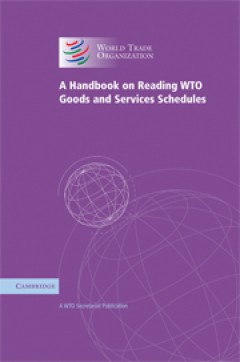
A Handbook on Reading WTO Goods and Services Schedules
This is a detailed guide on how to read WTO Schedules of Commitments for Goods and Services. The Schedules are part of the Legal Texts of the WTO Uruguay Round Agreements. They comprise about 27,000 pages of specific commitments by 153 members of the WTO on market access conditions for their markets. Understanding how to interpret the Schedules is essential for anyone wishing to glean informati…
- Edition
- -
- ISBN/ISSN
- 9780511992780
- Collation
- -
- Series Title
- -
- Call Number
- -
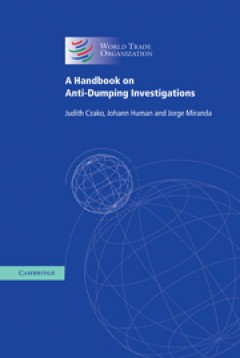
A Handbook on Anti-Dumping Investigations
The subject of anti-dumping procedures has received growing attention in international trade policy and has become a source of tension between countries. This handbook covers the major areas arising in anti-dumping investigations as embodied in the relevant WTO provisions, providing an exposition of well-sourced information, explanations and guidance for grasping the intricacies of anti-dumping…
- Edition
- -
- ISBN/ISSN
- 9781139162036
- Collation
- -
- Series Title
- -
- Call Number
- -
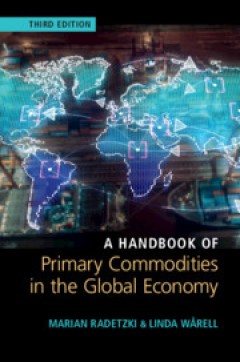
A Handbook of Primary Commodities in the Global Economy
The dramatic price falls of 2014–2015 marked the end of the most powerful and enduring commodity boom since the Second World War. Now in its third edition, this book acts as a guide to the ins and outs of the primary commodity universe. Updates to this edition reflect on the consequences of both China's economic slowdown as its industrialization enters a new, less commodity demanding phase, a…
- Edition
- -
- ISBN/ISSN
- 9781108886529
- Collation
- -
- Series Title
- -
- Call Number
- -
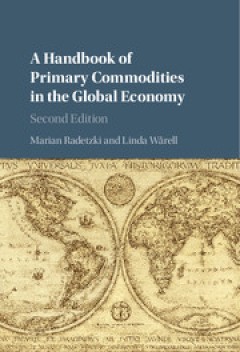
A Handbook of Primary Commodities in the Global Economy
The 2010s have been a dramatic period for most primary commodity markets. Producers suffered heavily as prices fell in response to new supply facilities going into production, juxtaposed against disappointing demand evolution from China in particular, marking the end of the most powerful and enduring commodity boom since the Second World War. This book is a guide to the primary commodity univer…
- Edition
- -
- ISBN/ISSN
- 9781316416945
- Collation
- -
- Series Title
- -
- Call Number
- -
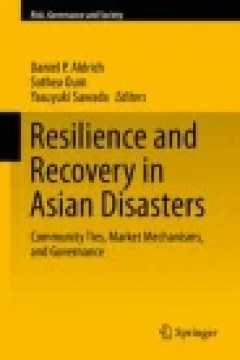
Resilience and Recovery in Asian Disasters
This book establishes a new, holistic framework for disaster recovery and mitigation, providing a multidisciplinary perspective on the field of risk management strategies and societal and communal resilience. Going beyond narrow approaches that are all too prevalent in the field, this work builds on an optimum combination of community-level networks, private market mechanisms and state-based as…
- Edition
- Ed. 1
- ISBN/ISSN
- 978-4-431-55022-8
- Collation
- -
- Series Title
- -
- Call Number
- -

Green Development in China Models and Discussions
This book focuses on the key determinants of China’s sustainable development in the general context of globalization from an environmental perspective. The author presents expert analysis on China’s role in the world economy, trade openness, cross-border investments and sustainable development in China. Readers will gain an in-depth understanding of various important issues concerning China…
- Edition
- -
- ISBN/ISSN
- 978-981-10-0692-0
- Collation
- VIII, 68
- Series Title
- -
- Call Number
- 330 JIA g

Great Divergence and Great Convergence A Global Perspective
This new monograph provides a stimulating new take on hotly contested topics in world modernization and the globalizing economy. It begins by situating what is called the Great Divergence--the social/technological revolution that led European nations to outpace the early dominance of Asia--in historical context over centuries. This is contrasted with an equally powerful Great Convergence, the r…
- Edition
- -
- ISBN/ISSN
- 978-3-319-17779-3
- Collation
- XII, 251
- Series Title
- -
- Call Number
- 330 GRI g
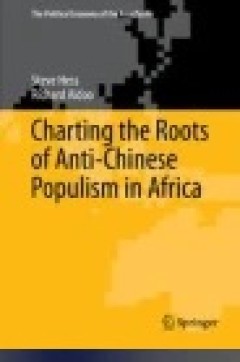
Charting the Roots of Anti-Chinese Populism in Africa
This book investigates China’s emergence as an outside player in SSA over the last several decades and the current understanding of the impact of Beijing’s growing presence on the continent, including several case studies focused on specific SSA countries. China’s accelerating economic and political engagement with sub-Saharan Africa (SSA) has gained growing attention in political and aca…
- Edition
- -
- ISBN/ISSN
- 978-3-319-17629-1
- Collation
- -
- Series Title
- -
- Call Number
- 337

India and Africa's Partnership: A Vision for a New Future
This book demonstrates the changing dynamics of India’s engagement with Africa, focusing on trade, investment, official development assistance, capacity building activities and the diaspora. It also examines its impact at the economic, political and societal levels with respect to governance, democratic structures, education and health. India has competitive edge of historical goodwill and it…
- Edition
- 1
- ISBN/ISSN
- 978-81-322-2618-5
- Collation
- XIV, 249
- Series Title
- India Studies in Business and Economics
- Call Number
- 330 IND

India and China in the Emerging Dynamics of East Asia
Though considerable research literature is now available on China–India relations, most of it still follows a conventional narrative, viewing the relationship through the narrow conflictual prism limited to South Asia than in the new, larger perspective, especially in the context of emerging East Asian dynamics. This book offers comprehensive analyses of some of these issues in papers address…
- Edition
- 1
- ISBN/ISSN
- 978-81-322-2137-1
- Collation
- XIII, 178
- Series Title
- -
- Call Number
- 330 IND
 Computer Science, Information & General Works
Computer Science, Information & General Works  Philosophy & Psychology
Philosophy & Psychology  Religion
Religion  Social Sciences
Social Sciences  Language
Language  Pure Science
Pure Science  Applied Sciences
Applied Sciences  Art & Recreation
Art & Recreation  Literature
Literature  History & Geography
History & Geography